California Car Window Tint Laws vary based on the type of vehicle and the window being tinted. For sedans, SUVs, and vans, the front side windows must allow over 70% of light in, while the back side and rear windows can have any darkness.
However, if the rear window is tinted, the vehicle must have side mirrors on both sides. For trucks, the front side windows can have any tint darkness, but if the rear window is tinted, the vehicle must have side mirrors.
Remember, these laws are subject to change, and it’s essential to check for updates.
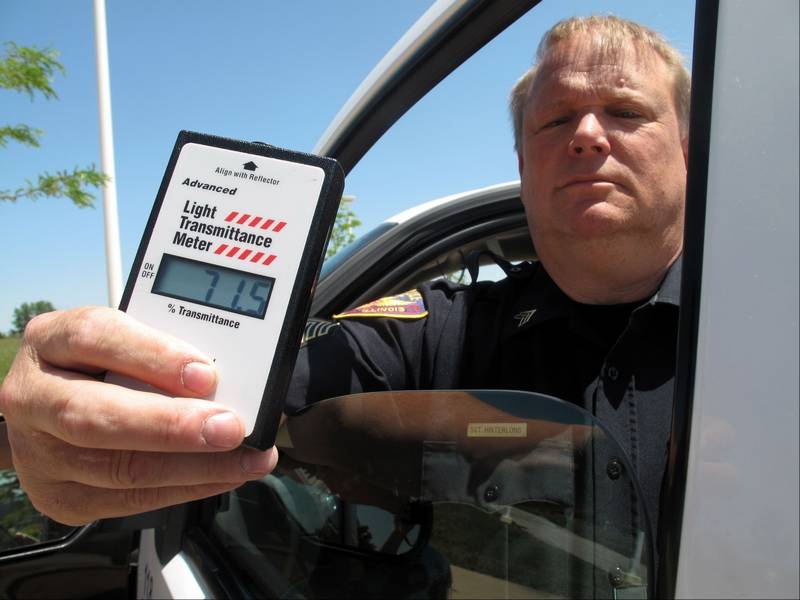
Legal Tint In California
The legal tint in California is as follows:
Windshield: Non-reflective tint is allowed on the top 4 inches of the windshield.
Front side windows: Aftermarket film must allow more than 88% of light in, or a minimum of 70% VLT (visible light transmission) if combined with factory-tinted windows.
Back side windows and rear windows: Any tint of darkness can be used.
Additionally, the following restrictions apply:
- Red, amber, and blue tinting is not allowed.
- Dual side mirrors are required for back tinted windows.
- Reflective or mirrored tints are not allowed.
If you are caught with an illegal tint in California, you may be fined, and your car may be required to be inspected.
It is also important to note that the California Highway Patrol (CHP) may issue a citation to a driver if they determine that the tint on their windows is impairing their visibility, even if it is within the legal limits.
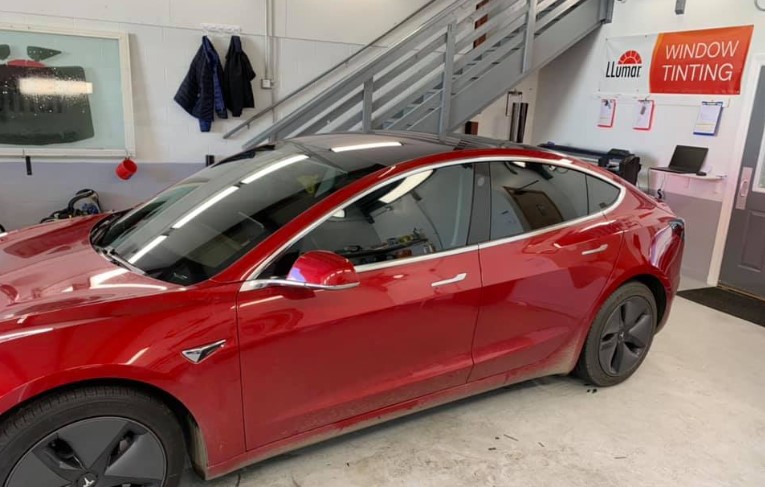
California Car Window Tint Laws
California car window tint laws are some of the strictest in the country. We have already shown the laws above for your assistance.
If you are caught with an illegal tint in California, you may be fined, and your car may be required to be inspected. The fine for illegal tint is $250 for the first offense and $500 for each subsequent offense.
There are a few exceptions to the California car window tint laws. For example, people with certain medical conditions may be allowed to have a darker tint on their front side windows. Additionally, commercial vehicles may have darker tint on their rear and back side windows, but not on their front side windows.
If you are unsure whether or not your car’s tint is legal in California, it is best to err on the side of caution and get it inspected by a qualified professional.
Is a 35% Tint Legal in California?
According to California law, a 35% tint is legal on the front side windows. The back side and rear windows can have any level of darkness as long as the driver can see out of them.
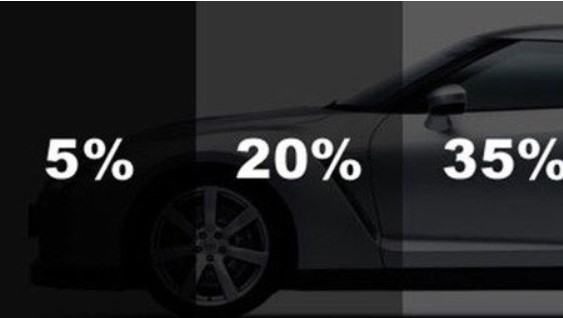
Can You Get Pulled Over for Tinted Windows in California?
Yes, you can get pulled over for having tinted windows in California. The reason for this is because the state has a “Window Tint Law” that regulates how much darkness is allowed on a car’s windows. If a police officer believes that your windows are too dark, then they have the right to pull you over and issue a citation.
Is 5 Tint Legal in California?
In California, window-tinting laws are governed by the Vehicle Code. Section 26708 of the Vehicle Code states that a person shall not operate a motor vehicle on a highway. Any object or material placed, displayed, installed, affixed, or applied between the front windshield and the front seat occupants that obstructs their view. This includes any type of sun visor, sign, poster, sticker decal, and other materials.
Additionally, Section 26708(a) of the Vehicle Code prohibits anyone from operating a motor vehicle with side windows that have been tinted so as to reduce visibility through the windows. However, there are some exceptions to these general rules.
Section 26708(b) of the Vehicle Code allows for medical devices to be placed in between the front windshield and driver’s seat if they are necessary for the driver’s health.
Additionally, Section 26708(c) of the Vehicle Code provides an exception for electronic information displays that provide information about vehicle speed and mileage.
These displays must be mounted in such a way that they do not obscure the driver’s view through any part of the windshield or side windows.
Is 15 Tint Legal in California?
As of 2020, California law states that window tinting on passenger vehicles must allow more than 50% of light in. This means that 15% tint is not legal in California. There are also restrictions on how dark the tint can be on the front windshield, driver’s side, and passenger’s side windows.
Is 20% Tint Legal in California?
There are a lot of different opinions out there about window tinting and what is considered legal. In California, the law states that a windshield can have a non-reflective tint applied to the top 6 inches of the windshield.
Front side windows must allow more than 88% of light in, while back side windows and rear windows can be any darkness. Window film must not be red, yellow or blue.
Some people believe that as long as your windows are not darker than the factory-installed ones, you’re good to go. Others believe that any level of tinting is illegal unless done by a professional with a medical exemption form. The truth lies somewhere in between these two extremes.
While it is true that you can get pulled over for having excessively dark window tints, the odds of this happening are quite low unless you’re doing something else illegal at the same time.
If an officer has reason to pull you over and sees that your windows are very dark, they may give you a ticket, but it’s unlikely they’ll just write you up for the tints alone.
Is 30% Tint Legal in California?
In California, the legality of a 30% tint depends on the window it is applied to. The state law allows a 70% VLT (Visible Light Transmission) for the front side windows, meaning that only 30% tint is permissible.
However, for the rear and back windows, you have more flexibility, and a 30% tint should be within the legal limits.
Front Windshield Tint California
If you’re looking to add some privacy and style to your car, front windshield tint is a great option. In California, there are a few things you need to know before getting your front windshield tinted.
First, it’s important to know that there are two types of film used for window tinting: dyed and metallic.
Dyed film is made with a dye that helps absorb light and heat, making it ideal for hot climates like California. Metallic film contains metal particles that help reflect light and heat, making it a good choice for colder climates.
Second, when choosing a window tinting company, be sure to ask about their warranty.
Most reputable companies will offer a lifetime warranty on their workmanship. This means that if the tint bubbles or peels, they will replace it free of charge.
Finally, be sure to ask about the different shades of window tint available.

50 Front Window Tint California
If you’re looking to get your car’s front windows tinted in California, there are a few things you need to know. First, the legal limit for front window tint darkness in California is 50%. This means that the film cannot be any darker than 50% VLT (visible light transmission).
There are a few exceptions to this rule, however, so it’s always best to check with your local law enforcement before having any work done. There are also different regulations for how much tint can be applied to the front windshield. In California, the windshield can have up to 4 inches of film applied to the top edge, as long as it does not extend past the AS-1 line.
The AS-1 line is the imaginary line that extends horizontally across the windshield from where it meets the roof. Anything below this line can be fully tinted without issue. When it comes to choosing a tint shade for your car, it’s important to keep in mind both the legal limits and your own personal preference.
If you want a very dark tint, you may need to go with a ceramic film, which has less of a chance of being pulled off during an inspection. Whatever route you choose, make sure you do your research and find a reputable installer who can do a great job on your car!
Tint Percentage Examples
Here are some examples of tint percentages and how they look:
70% Tint
- This is the baseline VLT (visible light transmission) for many cars’ windows today.
- It allows 70% of light to pass through, so it is very light and barely noticeable.
- It provides some UV protection and glare reduction, but it is not very effective at blocking heat.
50% Tint
- This tint allows 50% of light to pass through, so it is slightly darker than 70% tint.
- It provides good UV protection and glare reduction, and it can also help to block some heat.
- It is a popular choice for many car owners because it offers a good balance of privacy and visibility.
35% Tint
- This tint allows 35% of light to pass through, so it is significantly darker than 50% tint.
- It provides excellent UV protection, glare reduction, and heat rejection.
- It is also a good choice for privacy, as it is difficult to see inside the car from the outside.
20% Tint
- This tint allows 20% of light to pass through, so it is very dark.
- It provides the best possible UV protection, glare reduction, and heat rejection.
- It also offers the most privacy, as it is very difficult to see inside the car from the outside.
- However, it can also make it difficult to see out of the car at night, so it is not recommended for all drivers.
5% Tint
- This tint is so dark that it is often referred to as “limo tint.”
- It allows only 5% of light to pass through, so it is very difficult to see out of the car from the inside or the outside.
- It provides the best possible UV protection, glare reduction, and heat rejection.
- However, it is not legal in most jurisdictions, and it can be dangerous to drive with such a dark tint.
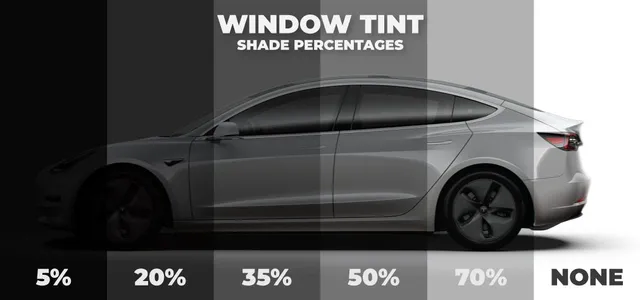
It is important to note that tint laws vary from state to state, so it is important to check the laws in your area before getting your windows tinted.
Tint Levels Chart
A tint levels chart provides a visual representation of the permissible darkness levels for automotive window tinting, typically measured as the percentage of light that can pass through the tinted windows. The chart serves as a guide for vehicle owners, law enforcement, and tinting professionals to ensure compliance with relevant regulations.
The tint levels are usually expressed as a percentage, indicating the amount of visible light allowed to penetrate through the tint. For example, a tint level of 5% means that only 5% of light can pass through, resulting in a darker and more privacy-enhancing tint.
Here’s a chart summarizing the different window tint levels, their visibility impact, and key considerations:
| VLT (%) | Visibility | Heat Rejection | UV Protection | Privacy | Legality (CA) | Notes |
|---|---|---|---|---|---|---|
| 70% | Nearly clear, light reduction minimal | Low | High | Low | Legal | Offers slight glare reduction and UV protection |
| 50% | Moderate reduction in light, still good visibility | Moderate | High | Moderate | Legal | Good balance of visibility, heat rejection, and privacy |
| 35% | Noticeable darkening, reduced visibility at night | High | High | Moderate to High | Legal | Provides significant heat rejection, privacy, and UV protection |
| 20% | Significant darkening, decreased visibility at night and during rain/snow | Very High | Very High | High | Legal in some states, illegal in others | Offers maximum privacy and heat rejection, but impacts visibility |
| 5% | Extremely dark, severely limited visibility | Very High | Very High | Very High | Illegal in most states | Only used for special applications like limousines |
What Medical Conditions Qualify for Window Tint in California?
In California, several medical conditions can qualify you for a window tint exemption, allowing you to install a darker tint than the state’s legal limit. Here are some of the most common conditions:
Skin conditions:
- Systemic lupus erythematosus (SLE): SLE can cause photosensitivity, making individuals more susceptible to sun damage and skin cancer.
- Albinism: People with albinism lack melanin, making their skin and eyes highly sensitive to UV rays.
- Xeroderma pigmentosum (XP): XP is a rare genetic disorder that makes individuals extremely sensitive to UV rays, causing rapid, severe sunburn and skin cancer.
- Bloom syndrome: This rare disorder also increases sensitivity to sunlight, leading to skin problems and other health issues.
- Solar urticaria: This condition causes hives and other allergic reactions when exposed to sunlight.
Eye conditions:
- Severe photophobia: This sensitivity to light can be caused by various eye conditions, such as migraines, cataracts, or retinal disorders.
- Glaucoma: Some forms of glaucoma may be worsened by sunlight exposure.
Other conditions:
- Certain medications: Some medications can increase photosensitivity, making window tint beneficial.
- Post-surgical recovery: For some surgeries, doctors may recommend window tint to protect healing tissues from sunlight.
To qualify for the exemption, you need:
- A written statement from your doctor stating your medical condition, why you need a darker tint, and the recommended light transmittance (VLT) level.
- To submit the statement and an application to the California Department of Motor Vehicles (DMV).
For more information, I recommend visiting the California DMV website or consulting with a doctor familiar with window tint exemptions.
What is the darkest legal tint in California?
In California, the darkest legal tint for front side windows is 70%, meaning that at least 70% of visible light must be able to pass through the tint. The rear side windows and rear window can have any darkness of tint. It’s essential to be aware of and adhere to these regulations to avoid legal consequences.
How long after tinting windows to roll them down?
The recommended time to wait before rolling down newly tinted windows is typically around 2 to 4 days. This allows the tint to fully cure and adhere to the glass properly. However, the exact duration may vary depending on the type of tint film and the specific instructions provided by the tint installer.
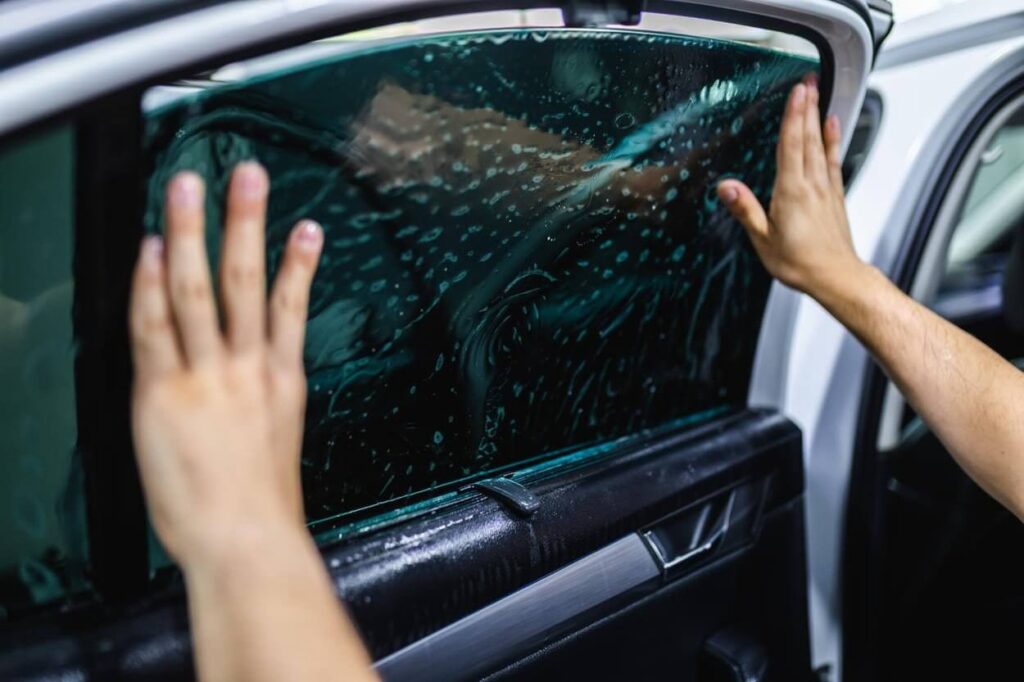
How much does it cost to tint car windows?
The cost of tinting car windows can vary based on several factors, including the type of tint film, the vehicle’s make and model, the number of windows being tinted, and the location and reputation of the tinting service provider.
On average, basic tinting can start around $100 to $200, while high-quality films or more extensive services may cost $300 or more.
Luxury or high-performance vehicles may incur higher costs due to the complexity of their windows. Additionally, if you opt for advanced features such as heat rejection, UV protection, or specialty tint films, the price may increase.
It’s advisable to obtain quotes from different tinting shops, considering the specific requirements for your vehicle, to get a more accurate estimate for the cost of window tinting.
California Car Tint Laws
Conclusion
The California car window tint laws are pretty straightforward. If you want to tint your windows, there are a few things you need to keep in mind. First, the darkness of the tint is measured by the Visible Light Transmission (VLT) percentage.
The lower the VLT percentage, the darker the tint will be. Second, you can only have a certain amount of light reflectivity with your tint. Third, there are different rules for front and back windows.
Front windows must have a VLT of at least 70%. Back windows can be any darkness as long as they’re not more than 50% reflective. Finally, remember that these laws vary from county to county, so be sure to check with your local authorities before you get your car tinted!
